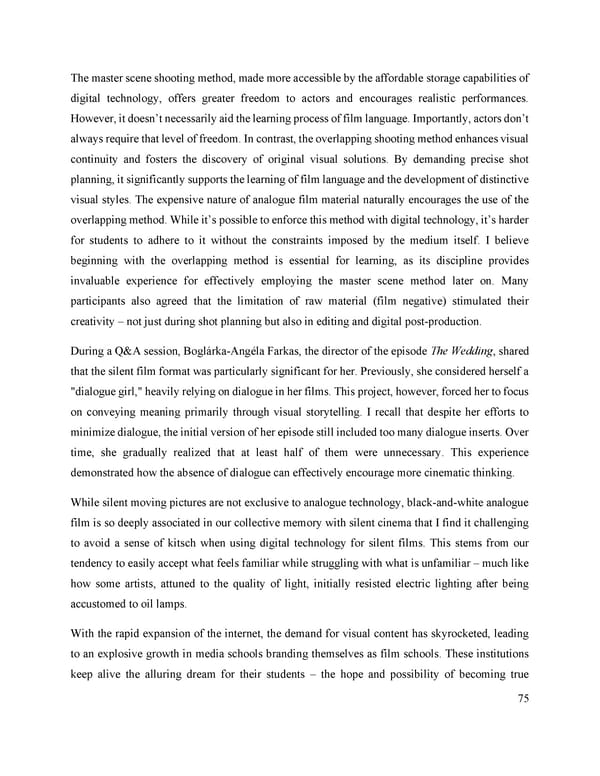The master scene shooting method, made more accessible by the affordable storage capabilities of digital technology, offers greater freedom to actors and encourages realistic performances. However, it doesn’t necessarily aid the learning process of film language. Importantly, actors don’t always require that level of freedom. In contrast, the overlapping shooting method enhances visual continuity and fosters the discovery of original visual solutions. By demanding precise shot planning, it significantly supports the learning of film language and the development of distinctive visual styles. The expensive nature of analogue film material naturally encourages the use of the overlapping method. While it’s possible to enforce this method with digital technology, it’s harder for students to adhere to it without the constraints imposed by the medium itself. I believe beginning with the overlapping method is essential for learning, as its discipline provides invaluable experience for effectively employing the master scene method later on. Many participants also agreed that the limitation of raw material (film negative) stimulated their creativity – not just during shot planning but also in editing and digital post-production. During a Q&A session, Boglárka-Angéla Farkas, the director of the episode The Wedding, shared that the silent film format was particularly significant for her. Previously, she considered herself a "dialogue girl," heavily relying on dialogue in her films. This project, however, forced her to focus on conveying meaning primarily through visual storytelling. I recall that despite her efforts to minimize dialogue, the initial version of her episode still included too many dialogue inserts. Over time, she gradually realized that at least half of them were unnecessary. This experience demonstrated how the absence of dialogue can effectively encourage more cinematic thinking. While silent moving pictures are not exclusive to analogue technology, black-and-white analogue film is so deeply associated in our collective memory with silent cinema that I find it challenging to avoid a sense of kitsch when using digital technology for silent films. This stems from our tendency to easily accept what feels familiar while struggling with what is unfamiliar – much like how some artists, attuned to the quality of light, initially resisted electric lighting after being accustomed to oil lamps. With the rapid expansion of the internet, the demand for visual content has skyrocketed, leading to an explosive growth in media schools branding themselves as film schools. These institutions keep alive the alluring dream for their students – the hope and possibility of becoming true 75
 Lost Analogue: Exploring Film, Music, and Interdisciplinary Methods in Education Page 75 Page 77
Lost Analogue: Exploring Film, Music, and Interdisciplinary Methods in Education Page 75 Page 77